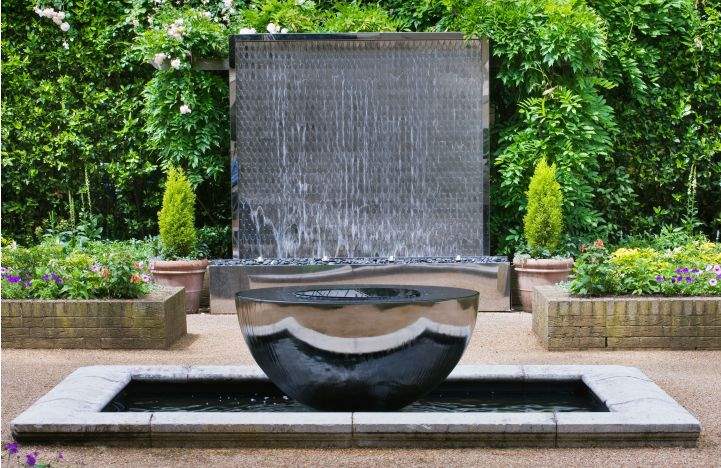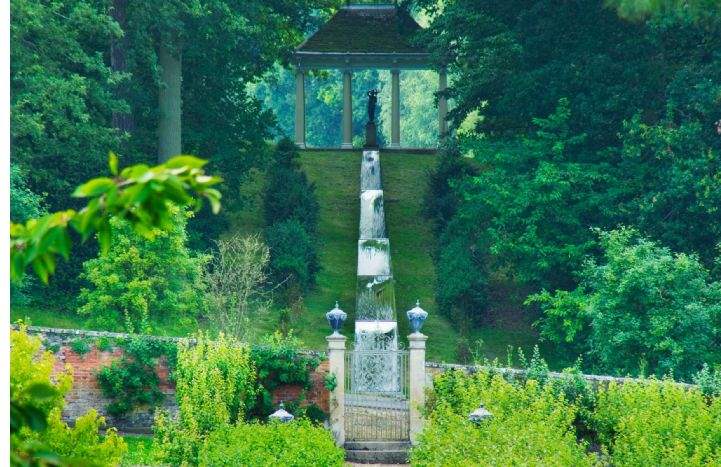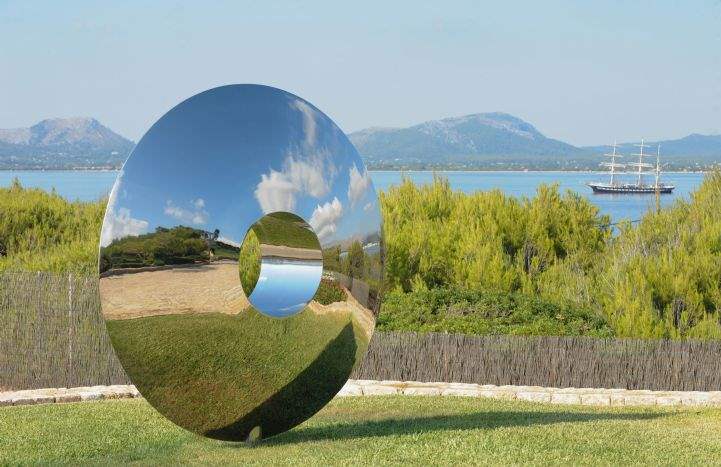Landscape sculpture is undergoing a renaissance. Enduringly popular since ancient times, historical statuary is now competing with contemporary pieces by artists such as Damien Hirst and Ai Weiwei whose work can be seen on permanent display in the 105-acre gardens of Chatsworth House. In 2017, these same gardens hosted the inaugural RHS Chatsworth Flower Show and the FreeForm exhibition which I was proud to take part in with our Curves and Cube installation, pictured below.
.jpg)
.jpg)
‘Curves and Cube’ by David Harber at the RHS Chatsworth Flower Show in 2017
Site specific sculpture
Architecture, art and sculpture distinguish a property, adding a sense of gravitas and permanence. Sculpture in the gardens and grounds provides an ideal focal point, capturing attention and leading the eye and the imagination to explore the full extent of a property and its surroundings. Sculptures commissioned as site specific pieces are particularly effective in this way and add an inestimable feeling of value and sophistication.

'Water Wall and Chalice' form part of David Harber’s permanent installation in Eaton Square Gardens
Transformational power
Sculpture has the power to completely change the ways in which gardens are both viewed and used. The effect works in gardens of all sizes. I have a permanent exhibition in the private gardens in London’s Eaton Square, above, a blissfully tranquil space that provides much-needed solace in the busy city. The use of water features and immersive reflective pieces there greatly enhance the feeling of relaxation.
.jpg)
'Mantle', a Feng Shui-friendly water feature by David Harber at a North London property development
Garden Feng Shui
The principles of Feng Shui apply to the garden as much as to the inside of a building. I was once commissioned to create a piece for a modest urban garden by property developers talking to Chinese buyers, and a Feng Shui expert recommended the use of moving water to promote a positive flow of energy.
One of our most popular designs, the Mantle, above, is particularly Feng Shui-friendly, due to its smooth, spherical form and the cut-out hollow spaces, which allow energy to flow through.

'Faux Falls' at Buscot Park in Oxfordshire
Fun and whimsy
There is ample opportunity to add an element of fun and whimsy to the garden through sculpture, something that I particularly enjoy. A prime example of this are the Faux Falls at Buscot Park, above. Lord Farringdon, the owner, commissioned a trompe-l'œil water cascade made up of six water walls which create an optical illusion of a free-flowing 200m waterfall.

'Torus' by David Harber at a private house in Majorca
Thinking about sculpture?
If you're considering a sculpture for your property, the starting place has to be, what are you looking to achieve? Are you after a bold defining statement or a more whimsical decorative element? Will the piece become a focal point or would you prefer it to blend in with its environment?
For the sculpture to be successful, the site where it is to be installed should be known and planned in advance. Backdrop is important, trees and open sky work well. Sculpture should be seen in its entirety rather than partially obscured so surrounding foliage, planting and colour palettes should be taken into account.
Practicalities of installation
If you are thinking about lighting so a piece can be enjoyed at night, or installing a water feature for added atmosphere, power and water supplies will be needed. The size and location of your sculpture will affect the practicalities such as the need for foundations.
RHS Chelsea 2018
David Harber and Savills are joining forces to celebrate the importance of outdoor art by sponsoring a Show Garden at the RHS Chelsea Flower Show. The Chelsea garden, designed by the celebrated landscape designer, Nic Howard, will represent how gardens, and indeed art within the garden, have evolved over time. It will feature several new works by David Harber.

(2).jpg)
.jpg)
.jpg)




.jpg)
.jpg)